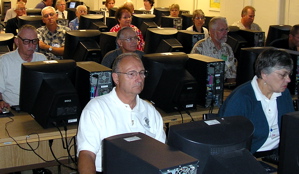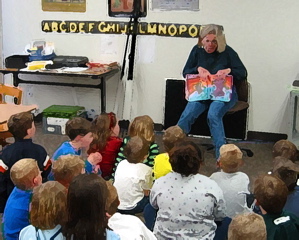The Techiest Person in a Three State Area
 Monday, August 15, 2005 at 06:56PM
Monday, August 15, 2005 at 06:56PM I spent the weekend in Aberdeen, a surprisingly nice little city in northeastern South Dakota. I somehow got talked into giving a workshop on creating websites to a bunch of Kiwanians attending their 3-state district convention there. Believe it or not, I am considered one of the “tech gurus” for the district - a genuinely frightening thought.
The folks in Kiwanis* (and I assume Rotary, Lions, Sertoma, and other service clubs) are by and large very, very nice people. They undertake fund-raising for and volunteer in lots of projects that better their communities. These are people with a social conscience that they actually use in concrete ways. The average age of this group of convention goers was about 105, but a good number of them were quite insistent that their clubs should be moving into the 21st century (or at least late 20th century) tech-wise.
We met Friday afternoon at a local university computer lab where all 30 attendees could have some “hands-on” experience using a web-generation program specifically designed for Kiwanis clubs. The object of the workshop was useful, the technology itself worked just fine, and the following day, I overheard attendees sharing what they had learned in the workshop. All in all, a successful event.
What amazed me though was just how technologically-illiterate wonderful, involved and intelligent people still are in this country. I was thrown back 15 years and more to teacher inservices when I could not count on learners knowing how to use a mouse, click, or even find the enter key. I’d not worked with such a group for an awfully long time. I actually had a nightmare about the training that night. The experience told me:
1. As educators, we may be the MOST technologically-knowledgeable people in our communities. Staff development has paid off. So we don’t know everything. Isn’t everyone a life-long learner?
2. We cannot assume our kids come from homes that include adults who can guide their technology use. For so many students, schools are their only source of technology skill acquisition and librarians are often their only teachers of those skills in the schools.
3. Many adults don’t realize their public libraries can provide them technology access. When folks complained that they don’t have a computer at home to practice skills and I suggested they use the terminals at their public library, they seemed genuinely surprised. Was this ignorance or willful ignorance? I wondered.
One of the coolest things I’ve ever seen a librarian do was to ask parents to bring their children with them to a PTA meeting, during which the KIDS taught their parents some of the online research skills the librarian had taught them. Parents learned skills, students had those skills reinforced, and the stature of the librarian in the parents’ eyes grew tremendously.
To what extent should we in the schools be educating not just kids, but parents and the community as a whole? Any good ideas about how this can be accomplished?
*Potential prejudice alert - I am president this year of our local Kiwanis Club here in Mankato.
Kiwanians get techie.









